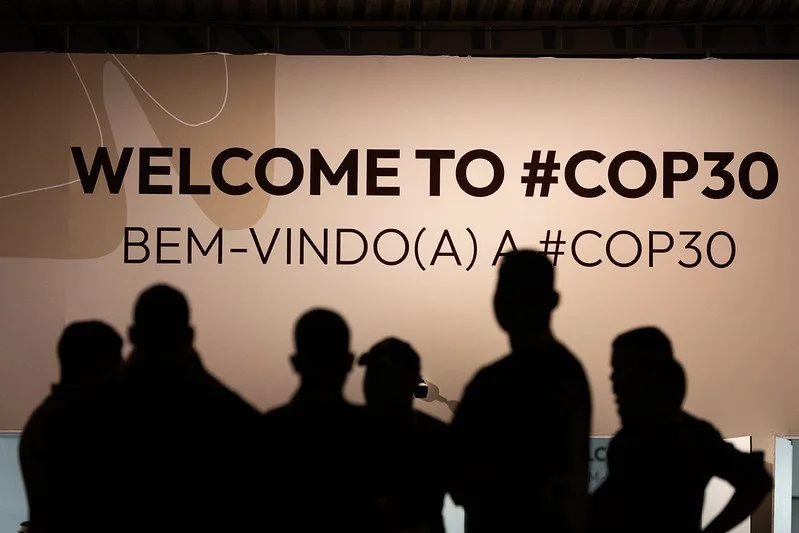TENSIONS RISE OVER ADAPTATION INDICATORS AS DEVELOPING COUNTRIES DRAW RED LINES AT COP30
At its core, the disagreement is not just about indicators, but the politics of responsibility. The African Group and other developing country blocs argue that adaptation tracking should not become a backdoor means of shifting obligations or imposing new compliance burdens on those least responsible for the climate crisis
Belém, Brazil
As negotiators at COP30 dive deeper into the technical heart of the Global Goal on Adaptation (GGA), sharp divisions have emerged over the proposed list of indicators meant to track progress. Developing countries, among them African nations under the African Group of Negotiators (AGN) umbrella, have flagged a series of “red lines” in the draft indicator list, warning that several proposed metrics risk overstepping national sovereignty and diluting the finance obligations of developed countries under Article 9 of the Paris Agreement.
The indicator list, intended to measure global adaptation progress under the GGA, is now a major flashpoint. Developing countries insist that the indicators must reinforce the principle of common but differentiated responsibilities rather than impose prescriptive requirements on national policies or budgets. Developed countries, meanwhile, are pushing for a more universal approach to ensure what they are calling comparability and accountability across all Parties.
On Day 3 of the Belem summit, developing nations were categorical that adaptation indicators must respect national contexts, avoid imposing new reporting burdens, and, crucially, uphold the financial commitments already enshrined in international law.
At its core, the disagreement is not just about indicators, but the politics of responsibility. The African Group and other developing country blocs argue that adaptation tracking should not become a backdoor means of shifting obligations or imposing new conditionalities on those least responsible for the climate crisis.
As negotiations continue, the challenge for COP30 delegates will be to reconcile the need for credible global measurement of adaptation progress with the principles of equity and common but differentiated responsibilities.
For now, the red lines serve as a stark reminder that adaptation metrics must not rewrite the rules of climate justice. Below is a breakdown of the key areas of contention identified by the African Group and other developing world countries, as analysed by the Power Shift Africa team of adaptation experts.
FOR DIMENSIONAL TARGETS, FINANCE AND SOVEREIGNTY ARE AT THE CORE
Target 10a10: Finance for climate information and early warning systems: Developing countries took issue with the indicator measuring the amount of finance for climate change adaptation for the design, development and operationalisation of climate information services and multi-hazard early warning systems. According to them, the indicator “does not align with finance obligations in Article 9” and fails to specify the source of these funds. They argue that without clear attribution to developed-country finance, the indicator risks shifting responsibility away from those historically obligated to provide adaptation support.
Target 10b02: National legislation on adaptation: This indicator seeks to measure the number of Parties that have adopted national legislation or other legislative frameworks on adaptation. The AGN considers this too prescriptive to Parties, arguing that adaptation approaches differ widely and should not be standardised through rigid legislative expectations.
Target 10b07: Climate risk in public investments: This indicator would track the number of Parties with legal requirements for public investments to consider climate risks in planning, implementation, and maintenance.
Again, developing countries are pushing back, saying the measure imposes uniform expectations that do not account for national circumstances or legislative systems.
Target 10b08: Climate risks in public procurement: Developing countries have labelled this indicator both “too prescriptive” and outside the UNFCCC’s mandate. Tracking whether Parties have systems in place for integrating climate risks into public procurement, they argue, infringes on domestic policymaking and institutional autonomy.
Target 10b09: National budgets reflecting adaptation allocations: This proposed indicator, on national budgets that reflect adaptation allocations across sectors and ministries, has triggered some of the strongest objections. The AGN asserts that it “does not align with finance obligations in Article 9,” that national budgets are sovereign matters, and that the UNFCCC “has no mandate” to monitor them. The group fears that such indicators could place scrutiny on developing countries rather than on whether developed countries are delivering promised finance.
Target 10b10: Proportion of government budget allocated to adaptation: Similarly, developing countries have rejected this indicator, arguing that it intrudes into national budgetary processes and fails to recognise that the primary responsibility for providing adaptation finance rests with developed nations.
ON MEANS OF IMPLEMENTATION, WHAT REALLY COUNTS AS FINANCE?
One of the most politically charged sections is Target 10c06, which proposes several options for tracking the amount of international public finance for adaptation. Option 1 includes finance provided, mobilised, and received for implementing adaptation plans, Option 2 narrows this to finance provided and received, while Option 3 specifies finance provided or mobilised by developed countries and received by developing countries.
Developing countries’ preference leans toward Option 3, as it explicitly anchors the indicator in Article 9 obligations. Broader formulations, they warn, could allow developed countries to inflate figures by counting private investments or loans as adaptation finance.
The African Group has also raised concerns about Target 10c07, on Annual adaptation finance expenditure, noting that “there is no clarity on which finance” is being measured. Similarly, Target 10c08, percentage of private climate finance dedicated to adaptation, has been flagged for ambiguity and lack of accountability mechanisms.
Target 10d05, measuring the number of Parties with sufficient institutional capacity and adequate financial resources to fully operate national adaptation monitoring, evaluation, and learning (MEL) systems, has drawn objections for the same reasons. The AGN pointed out that the indicator “does not align with finance obligations in Article 9” and fails to specify the sources of funding required to achieve such capacity.
THEMATIC INDICATORS DEEMED OVERREACHING AND PRESCRIPTIVE
Beyond the finance-related metrics, developing countries have also flagged several thematic indicators as overly intrusive or unrealistic.
Target 9b05: Finance for food and agriculture adaptation: This indicator, tracking the amount of adaptation finance disbursed to food and agriculture per year, has been criticised for lacking clarity on where the funds originate and for failing to reflect Article 9 obligations. The African Group reiterates that all Means of Implementation (MoI) indicators should be consolidated in one place to avoid fragmentation and duplication.
Target 9e03: Tipping points and adaptation limits: This indicator proposes to count the number of Parties that include coverage of critical thresholds, tipping points, and adaptation limits in their NAPs and risk assessments. The AGN described it as “too prescriptive,” arguing that countries must retain discretion on what scientific or risk parameters to include.
Target 9e07: Impact of temperature overshoot on adaptation effectiveness: Likewise, developing countries have rejected this indicator as overly intrusive, saying that mandating the inclusion of overshoot analysis in national planning undermines flexibility and sovereignty.
Target 9e06: Standards or taxonomies for adaptation finance: This proposed measure for tracking Parties that have established relevant standards or taxonomies to align public and private sector finance for adaptation in infrastructure and human settlements, has also seen as too prescriptive and lacking clarity on funding sources

